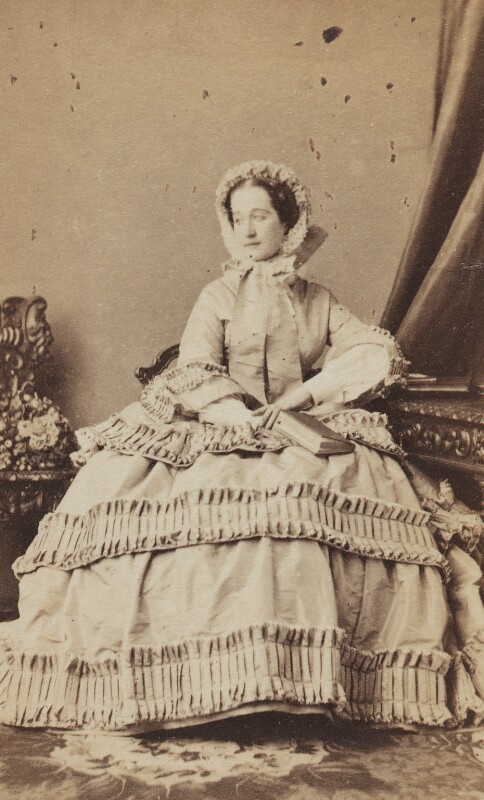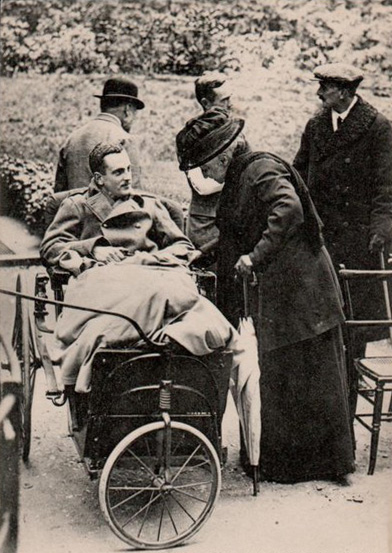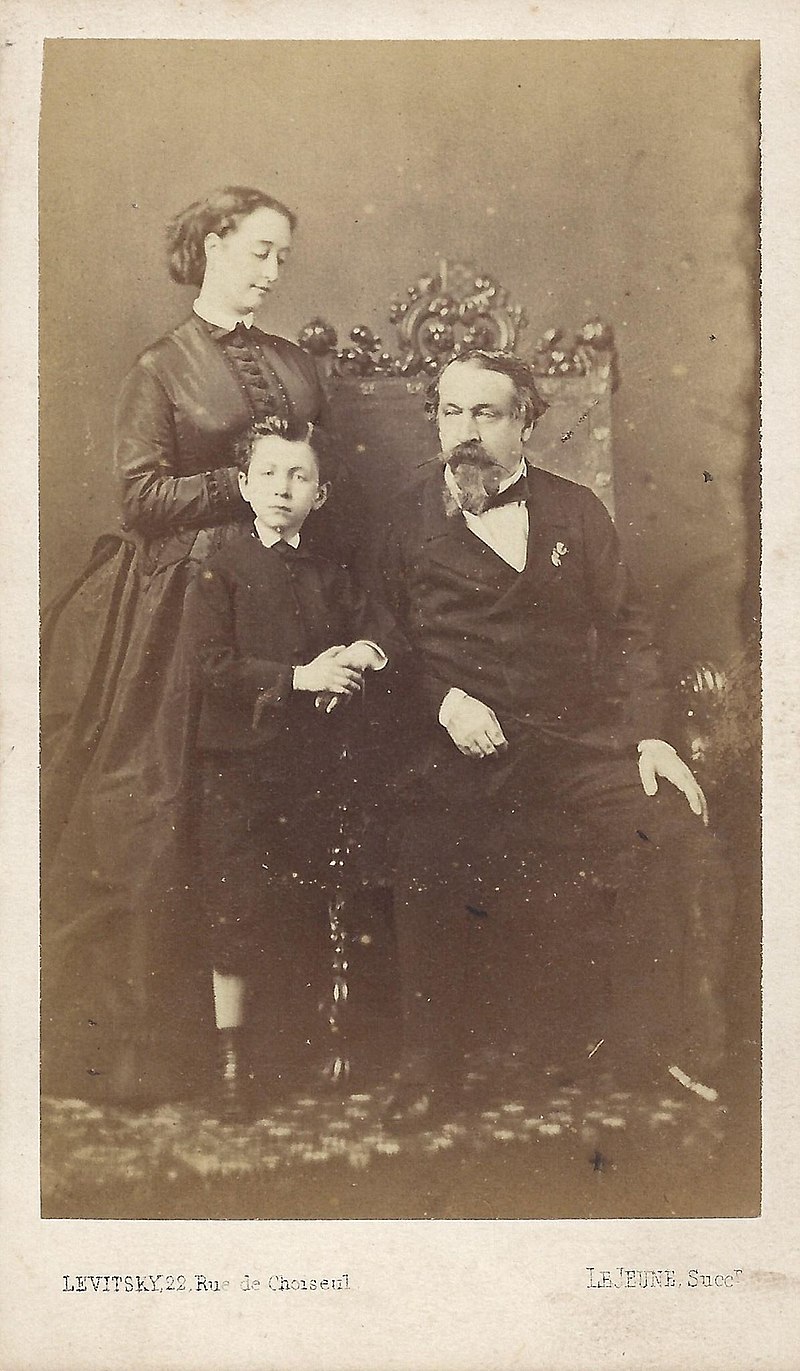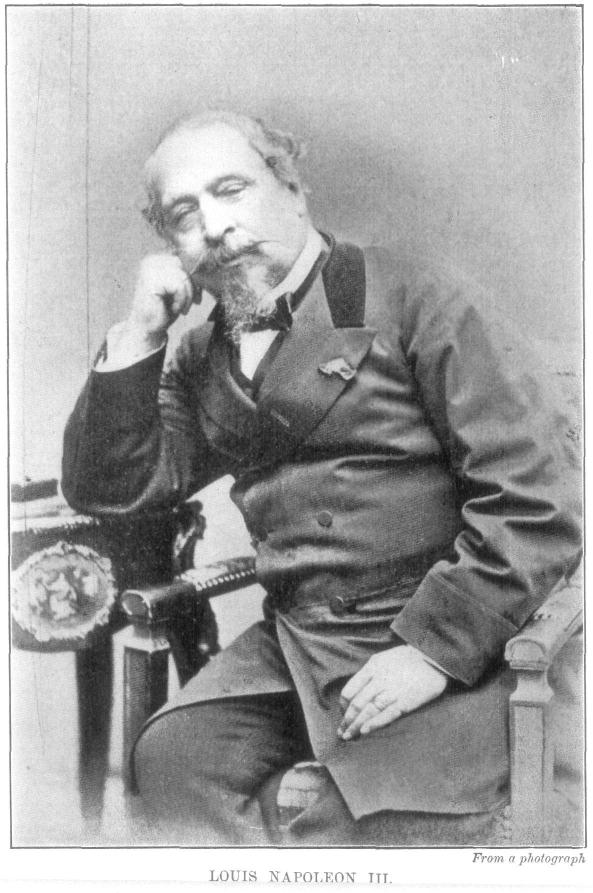by Scott Mehl © Unofficial Royalty 2016

Credit – Wikipedia
Eugénie de Montijo, Empress of the French
Empress Eugénie of the French was the wife of Emperor Napoleon III, the last French monarch. She was born Doña María Eugenia Ignacia Agustina de Palafox y Kirkpatrick on May 5, 1826, in Granada, Spain. Her parents were Cipriano de Palafox y Portocarrero,8th Count of Montijo and María Manuela Enriqueta Kirkpatrick de Closbourn y de Grevigné, and she had one older sister:
- María Francisca de Sales Portocarrero, 16th Duchess of Peñaranda (1825-1860) – married Jacobo Fitz-James Stuart, Duke of Alba, had issue
At six years old, she left Spain for Paris where she attended the Convent of the Sacré Coeur and the Gymnase Normal, Civil et Orthosomatique. In 1837, she left for a boarding school in the United Kingdom, with her sister, to learn English. In addition to her formal schooling, she also received an extensive education at home, under two English governesses. When her father died in 1839, the sisters returned to their mother in Madrid. Because of her mother’s position in Spanish society, Eugenie met Queen Isabella II of Spain and took several trips to Europe to find an appropriate husband.
Eugénie first met Prince Louis Napoléon in April 1849. At the time, he was president of the Second Republic. His attempts to seduce her failed, as she insisted on marriage before any sort of physical relationship. Louis Napoleon became Emperor Napoleon III in December 1852, and the following month, on January 22, 1853, he announced his engagement to Eugénie. Following a civil ceremony at the Tuileries Palace, the couple married at the Cathedral of Notre-Dame in Paris on January 29, 1853. They had one son:
- Louis Napoléon, Prince Imperial (1856 – 1879), unmarried, died fighting in the Zulu War in South Africa in 1879

Eugénie with her husband and son, c1864. source: Wikipedia
Despite initial reservations about her less-than-royal background, Eugénie quickly became beloved by the French people. She traveled extensively, representing the Emperor – including the opening of the Suez Canal in 1869 – and served as Regent during his absences from the country. She also became a close advisor to her husband, who often consulted her on important issues.

Villa Eugénie in Biarritz. source: Wikipedia
In 1854, they had a large summer villa – Villa Eugénie – built in Biarritz, where Eugénie often hosted Queen Victoria and other foreign royals. At the time, a small sleepy town, Biarritz quickly became a very popular destination for many of Europe’s royal and noble families. Today, the villa is known as the Hôtel du Palais, one of the most exclusive resorts in the area.
During the Franco-Prussian War, Eugénie served as Regent while her husband and son served at the German front. After several losses, she took it upon herself to name a new government and argued against her husband’s plan to return to Paris. A month later, the French forces were defeated at the Battle of Sedan, and the Emperor surrendered. As rioting began in Paris, the Empress quickly fled the city, making her way to England. By the time she set sail, the Second Empire had come to an end.
Eventually joined by her husband, the couple settled in settled at Chislehurst, in Kent, England. Widowed in 1873, she also lost her only son in 1879. She had developed a close friendship with Queen Victoria and spent several months at Osborne House after her son’s death. A few years later, in 1887, she was named godmother of Victoria Eugenie of Battenberg (later Queen of Spain). By then, she was living at Farnborough Hill in Hampshire. A few years later, in 1892, she had a villa – Villa Cyrnos – built in Roquebrune-Cap-Martin on the French Riviera, where she often hosted visits from Queen Victoria and other European royals, including Nicholas II, Emperor of All Russia and Empress Alexandra Feodorovna of Russia in 1909.

Empress Eugénie visiting wounded soldiers at Farnborough Hall, 1914. source: Wikipedia
Very active during World War I, Eugénie supported several hospitals in France, as well as funding a military hospital at Farnborough Hill. She also donated her yacht to the British Navy. For her contributions to the war effort, she was made a Dame Grand Cross of the Order of the British Empire in 1919 by King George V.

Empress Eugénie, photographed in 1920. source: Wikipedia
The Empress Eugénie died on July 11, 1920, while visiting relatives at the Liria Palace in Madrid. She is buried in the Imperial Crypt at St. Michael’s Abbey in Farnborough, Hampshire, along with her husband and son.

Sarcophagus of Eugénie, above the altar, at St. Michael’s Abbey; Credit – Wikipedia
This article is the intellectual property of Unofficial Royalty and is NOT TO BE COPIED, EDITED, OR POSTED IN ANY FORM ON ANOTHER WEBSITE under any circumstances. It is permissible to use a link that directs to Unofficial Royalty.
France Resources at Unofficial Royalty















